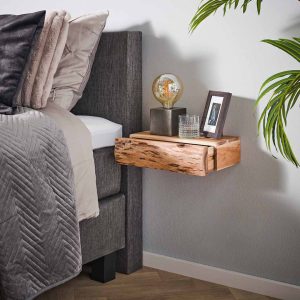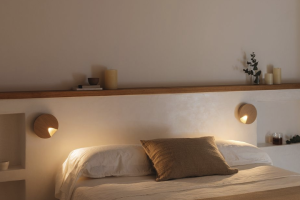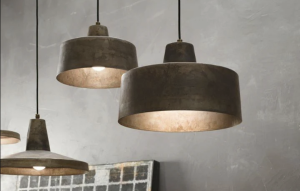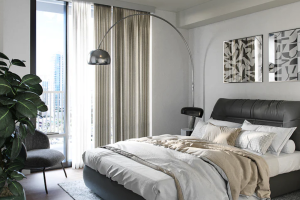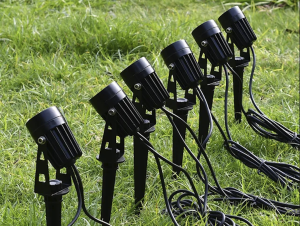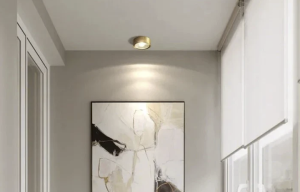Designing the Future: A Look at Children’s Bedrooms in 2024
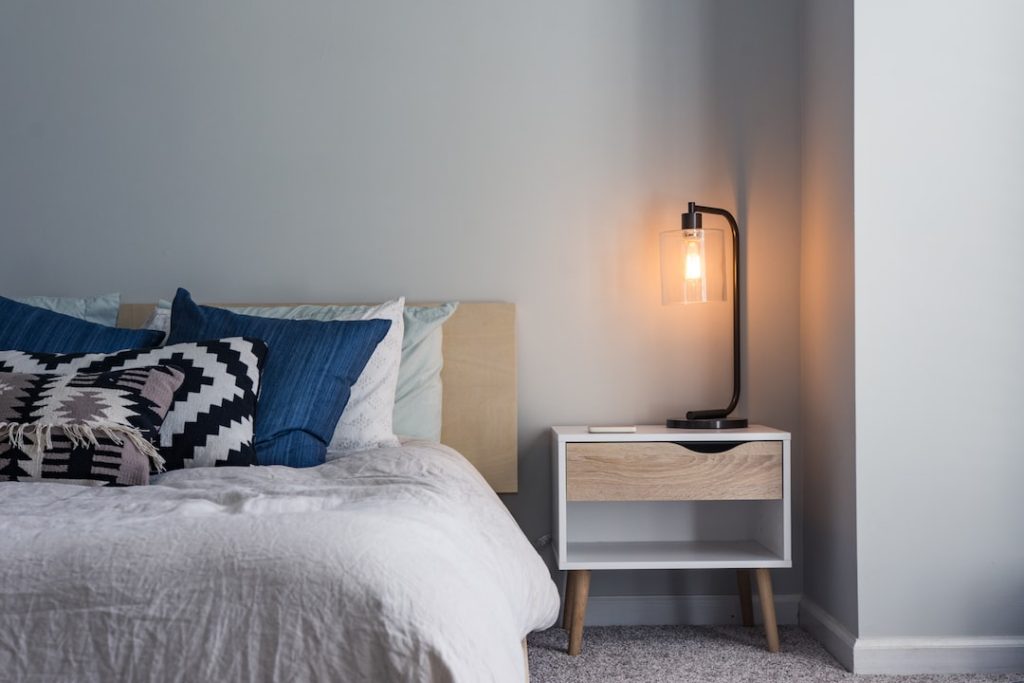
Designing a child’s bedroom is not just about creating a space that looks cute and appealing. It is a crucial aspect of their growth and development. A well-designed bedroom can provide a safe and comfortable environment for children to rest, play, and learn. As we look towards the future, it becomes even more important to consider sustainability, technology, and multifunctionality in the design of children’s bedrooms.
Designing for the future means thinking beyond the present and considering how the space can adapt and evolve as the child grows. It means creating a bedroom that will stand the test of time and not become outdated or irrelevant in a few years. By incorporating sustainable materials, energy-efficient features, and smart home technology, we can create bedrooms that are not only functional but also environmentally friendly and technologically advanced.
The Role of Technology in the Future of Children’s Bedrooms
Technology has become an integral part of our lives, and it is no different for children. In the future, we can expect to see more smart home technology being integrated into children’s bedrooms. This technology can enhance safety, comfort, and convenience for both children and parents.
One example of smart home technology that can be incorporated into children’s bedrooms is voice-activated lighting. This allows children to easily turn on and off lights without having to reach for a switch. It can also be programmed to dim or change colors, creating a soothing environment for bedtime.
Another example is smart thermostats that can be controlled remotely through a smartphone app. This allows parents to adjust the temperature in their child’s bedroom from anywhere in the house or even when they are away from home. This feature ensures that the room is always at a comfortable temperature for sleeping or playing.
Sustainable Design: Creating Eco-Friendly and Energy-Efficient Spaces for Children
In recent years, there has been a growing awareness of the importance of reducing our environmental impact. This awareness extends to the design of children’s bedrooms as well. By incorporating sustainable materials and energy-efficient features, we can create eco-friendly spaces that are not only good for the planet but also for our children’s health and well-being.
When designing a sustainable children’s bedroom, it is important to choose materials that are renewable, recyclable, and non-toxic. For example, instead of using traditional hardwood flooring, consider using bamboo flooring, which is a fast-growing and renewable resource. Additionally, opt for low-VOC (volatile organic compounds) paints and finishes to minimize indoor air pollution.
Energy-efficient features can also be incorporated into the design of children’s bedrooms. This can include LED lighting, which uses less energy and lasts longer than traditional incandescent bulbs. Additionally, consider installing smart power strips that automatically turn off electronics when they are not in use to reduce energy consumption.
The Impact of Minimalism on Children’s Bedrooms in 2024
Minimalism has been a popular design trend in recent years, and it is expected to continue to influence children’s bedrooms in the future. Minimalism is all about simplicity and decluttering, creating a space that is clean, organized, and free from unnecessary distractions.
Incorporating minimalism into children’s bedrooms can have several benefits. It can help promote a sense of calm and relaxation, making it easier for children to sleep and focus. It can also encourage creativity and imagination by providing a blank canvas for play and exploration.
To incorporate minimalism into children’s bedrooms, start by decluttering and organizing the space. Get rid of any toys or items that are no longer used or loved. Invest in storage solutions that are both functional and aesthetically pleasing, such as bins or baskets that can be easily tucked away when not in use.
Designing for Multifunctionality: Creating Flexible Spaces for Children’s Play and Sleep
Children’s bedrooms are not just for sleeping. They are also spaces for play, learning, and relaxation. Designing for multifunctionality means creating flexible spaces that can adapt to the changing needs and interests of the child.
One way to create a multifunctional children’s bedroom is by incorporating furniture that serves multiple purposes. For example, a bed with built-in storage drawers can provide a place to sleep as well as a place to store toys or clothes. A desk that can be folded up when not in use can provide a space for homework or creative activities.
Another way to create a flexible space is by using modular furniture that can be easily rearranged or reconfigured. This allows the child to change the layout of their bedroom as they grow and their needs change. It also provides opportunities for creativity and personalization.
The Influence of Children’s Interests and Hobbies on Bedroom Design

Children have their own unique interests and hobbies, and incorporating these into the design of their bedrooms can help create a space that they truly love and feel connected to. Whether it’s sports, animals, music, or superheroes, there are endless possibilities for themed children’s bedrooms.
One way to incorporate children’s interests into bedroom design is through wall decals or murals. These can be easily applied and removed, allowing the theme to change as the child’s interests evolve. Additionally, consider using bedding, curtains, or rugs that feature their favorite characters or motifs.
Another way to incorporate children’s interests is through storage solutions that reflect their hobbies. For example, if your child loves art, consider installing a wall-mounted easel or a pegboard for hanging art supplies. If they love sports, consider installing hooks or shelves for storing equipment.
The Importance of Safety and Security in Children’s Bedrooms
When designing children’s bedrooms, safety should always be a top priority. Children spend a significant amount of time in their bedrooms, and it is important to create a space that is free from hazards and promotes their well-being.
Some safety considerations for children’s bedrooms include ensuring that furniture is securely anchored to the wall to prevent tipping, using cordless window coverings to prevent strangulation, and installing outlet covers to prevent electrical accidents. Additionally, it is important to choose non-toxic materials and finishes to minimize exposure to harmful chemicals.
Creating Personalized Spaces: The Role of Customization in Children’s Bedroom Design
Personalization is an important aspect of creating a bedroom that feels like a true reflection of the child’s personality and interests. By allowing children to have a say in the design process and incorporating elements that are meaningful to them, we can create spaces that they feel a sense of ownership and pride in.
One way to customize children’s bedrooms is by allowing them to choose the color scheme. This can be done through paint, wallpaper, or bedding. Additionally, consider displaying their artwork or creations on the walls or shelves to add a personal touch.
Another way to customize children’s bedrooms is by incorporating their name or initials into the design. This can be done through wall decals, personalized pillows, or custom artwork. It adds a personal touch and makes the space feel truly their own.
The Role of Color and Pattern in Children’s Bedroom Design in 2024
Color and pattern play a crucial role in creating a visually appealing and stimulating environment for children. In 2024, we can expect to see bold and vibrant colors being used in children’s bedrooms, as well as playful patterns that add interest and excitement.
When incorporating color into children’s bedrooms, it is important to consider the psychological effects of different colors. For example, blue is often associated with calmness and relaxation, making it a good choice for bedrooms. Yellow is associated with happiness and energy, making it a good choice for play areas.
When it comes to patterns, the possibilities are endless. From stripes and polka dots to florals and geometric shapes, patterns can add visual interest and create a playful atmosphere. Consider using patterned wallpaper, bedding, or rugs to add a pop of color and personality to the space.
Designing Children’s Bedrooms for a Brighter Future
Designing children’s bedrooms for the future means considering sustainability, technology, and multifunctionality. By incorporating these elements into the design process, we can create spaces that are not only visually appealing but also environmentally friendly, technologically advanced, and adaptable to the changing needs of the child.
When designing a child’s bedroom, it is important to create a space that promotes their growth and development. This includes considering their interests and hobbies, incorporating personalized elements, and creating a safe and secure environment. By taking these factors into account, we can create bedrooms that will grow with the child and stand the test of time.
Check out this related article on the top 5 best children’s bookcases for kids. Having a well-organized and accessible bookshelf is essential for creating a cozy and inviting atmosphere in your child’s bedroom. With these bookcases, you can easily display and store your child’s favorite books, encouraging a love for reading from an early age. Click here to read more about the best options available in the market.

